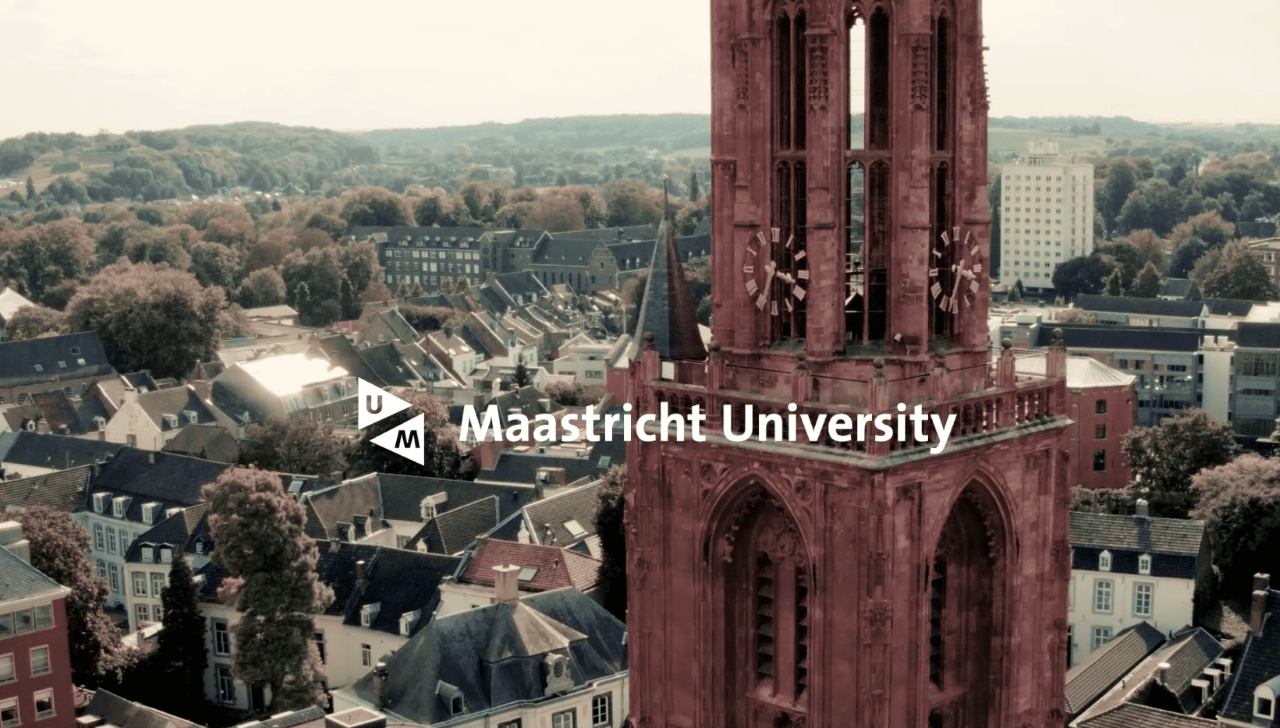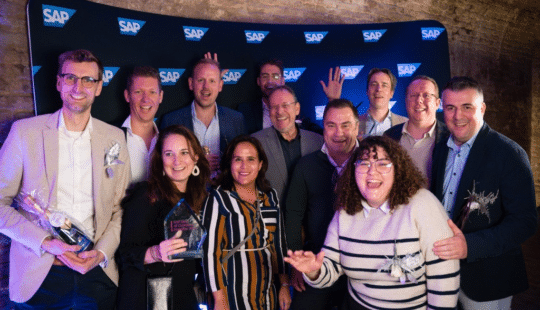Basis for digital transformation
Digitalisation has a major impact on the organisation of university education. For example, university employees also expect the online experience they are used to at home ‘at work’. Requesting leave or processing an invoice? With a few mouse clicks, it should all be manageable. With SAP S/4HANA Cloud, SAP SuccessFactors and SAP Ariba solutions, Maastricht University is taking steps towards becoming a digital university.
With the ‘SAP Intelligent Enterprise Solutions’, UM has an integrated suite of solutions. This suite follows standard and best-practice scenarios for busine

ss process integration and is easy to use. “Because of the simple interface, managers and other employees can actually start using the system immediately and have insight into all relevant data,” says Fred Offerein, project manager at UM. “A clear dashboard contains all the information that, for example, a manager or a procurement employee needs to be able to carry out their work. We are also laying the foundation for further innovation with this.”
Strong growth
Maastricht University is one of the youngest and most international universities in the Netherlands. Founded in 1976 under the name Rijksuniversiteit Limburg, the educational institution had over 22,000 students of 129 different nationalities in 2021. The number of employees was over 4,200, many of whom were also from abroad.
Especially in the past decade, the university experienced strong growth. The numbers of students and staff doubled during that period. However, according to Nick Bos, vice-president of the Executive Board, the working methods and operations remained unchanged for a long time. “Then one day you reach the point where the processes are outdated and no longer fit the size of the organisation. And that you conclude: it can’t go on like this.”
Offerein recognises the picture Bos paints. “Our IT was comparable to a jeep in the mud. It was still driving, but you had to accelerate to move forward. We had introduced too much customisation and built systems on systems to facilitate our substantive growth.”
Procurement, HR and Finance
In the HR domain, the proverbial jeep was in danger of getting stuck. Offerein: “Some things were still handled in a traditional way. For instance, we were still working with forms that were filled in by pen and sent by internal mail. The recruitment and selection process, for example, still involves letters sent through various channels. It is then a challenge to process and store data ‘privacy-proof’.”
“But Purchasing and Finance also ran into limitations. Here, too, it was necessary to take a close look at processes, partly in view of increasingly strict laws and regulations,” Offerein continues. “In addition, there are also cross-links between HR, Procurement and Finance. For example, HR uses financial data, and Procurement has to deal with HR when it comes to purchasing zzp services. In short, we needed a digital strategy for the entire business. We didn’t have one yet.”
Towards a single SAP system
“We wanted to take a hit in efficiency and improve services by bringing information together in a coherent way,” says Bos. As a ‘digital university’, we want to offer employees an optimal online experience. Purchasing should be able to order a new product with a few mouse clicks and leave a review after ‘next day delivery’. The same goes for approving leave or ancillary activities, for example. A manager should be able to arrange this with a tick in the HR file where the approval is then also immediately properly recorded.
For this, however, UM had to start with a clean slate. As part of the Integral Management Programme, UM is therefore redesigning the supporting business processes in the HR, Finance and Procurement domains. Employees will say goodbye to old systems and start using a single new and user-friendly system: ‘SAP in the cloud’. All processes of the various departments, such as processing an invoice or filling in data for a new employee, run through this system, which consists of several integrated components.
After choosing SAP, McCoy & Partners was commissioned to set up SAP S/4HANA Cloud and SAP Ariba based on SAP Best Practices. HuRis was involved in the implementation of SAP SuccessFactors as a consulting party. Green Rock Consulting’s external programme manager Jurgen van de Donk became responsible for the day-to-day management of the ‘construction team’.
Thorough preparation
According to Bos and Offerein, what followed was not an IT project, but a ‘change programme’ affecting everyone in the organisation. Thorough preparation with clear communication is then crucial. Bos: “We were not so naive as to think that the system you introduce will just smooth the processes. You have to put those in order first, and only then can you start working with the system. Otherwise, you get stuck. So we spent a lot of time on that.”
Creating support is at least as important, according to the vice-president of the Executive Board. “You are dealing with a change process that part of the community you are doing it for does not want at all. Not everyone wants to perform certain administrative actions such as approving ancillary activities themselves. Then you have to be clear in your communication and during training sessions about the benefits and user-friendliness of the new system.”
For the project to succeed, UM also deliberately opted for ‘plateau planning’. Offerein: “Jurgen van de Donk pointed out to us at an early stage that you shouldn’t want to do everything at once. That would take too long and you just have to hope that everything goes well. With plateau 1, we really laid the foundations. For HR, this means that leave and sick reports and the inflow, transfer and outflow of staff are in the new system, but declarations and recruitment and selection are not yet. That is planned for platform 2. After three plateaus, we have completely said goodbye to the old landscape.”
Plateau 1 live
In spring 2022, UM went live with Plateau 1 after a freeze. “You take into account that anything happens then, because one thing is certain: when going live like that, things go wrong and it’s a crisis. We had also geared our communication and helpdesk to that. But it actually went wonderfully well,” Offerein reflects. “That’s also a compliment to our IT
department. They managed to link the new systems and the old systems we are still dealing with very well.”
By which Offerein and Bos certainly do not mean to say that everything went smoothly. “We also never said that everything will go 100% right,” Bos stresses. The helpdesk received some five thousand questions about the new system during the first four months after going live. “These ranged from ‘I can’t find the leave button’ to issues calling for a system repair. But these are all issues we can solve.”
Towards data-driven
Although UM still has two plateaus to go, the university is already reaping the benefits of the new SAP system. Employees in Finance, HR and Procurement have access to the information they need at the touch of a button. Things like requesting and approving leave, processing an invoice or the intake of a new employee can be done with a few mouse clicks.
More than five hundred employees create hundreds of purchase orders per day using SAP solutions. The integrated SAP Intelligent Enterprise solutions contribute to process compliance across the suite and make procurement spend more manageable.
“Eventually, we will also make decisions based on the huge amount of data at our disposal, and less on intuition and feeling,” concludes Offerein. “But we are nowhere near that point yet. We will now start working on plateau 2 first.”



